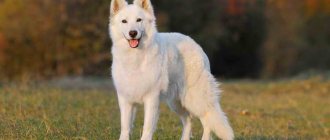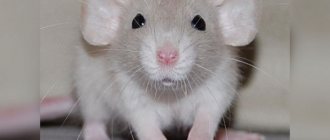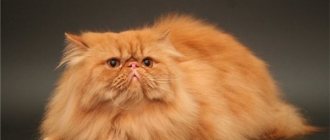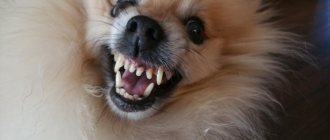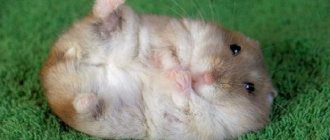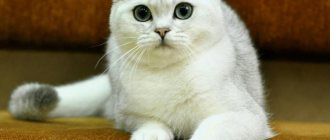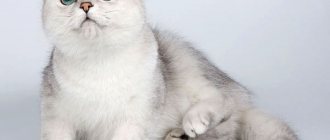Many people keep chinchillas as pets, others breed them en masse, and when crossed, obtain either the color of one of the main breeds, or a unique color. This article provides information about the appearance of chinchillas, the main breeds and the rules for breeding rodents.
Chinchilla breeds
Varieties of chinchillas
These animals come in two types, which differ in the size of the body and the size of the tail:
- Large short-tailed chinchillas (Peruvian) are native to Bolivia and some areas of the Argentine Andes. The fur of this chinchilla breed is so valuable that you will no longer see them in the wild. Today, such animals are raised only on farms. The short-tailed chinchilla has a strong body of 40 cm, weight 800 g. The tail is short with hard hair.
- Common, long-tailed (shore) chinchillas are still found in the Chilean Andes. They have a small body and an elongated tail covered with fur. Weight does not exceed 700 g.
Both chinchilla breeds are endowed with a gray color. Through selection of the Lesser Longtail, over 40 different colors of magnificent fur coats have appeared.
Angora chinchilla
The Royal Angora Chinchilla is a subspecies of the long-tailed chinchilla. Interestingly, it was not specifically bred. It was nature itself that gave us an animal with such a beautiful long coat.
The first rodents with this mutation were noticed in the 60s of the last century. However, the standard was described in 2001. Breeding the subspecies is extremely difficult. A pair of Angoras is likely to give birth to ordinary babies with short hair. Therefore, breeding such rodents requires high professionalism when selecting pairs.
Angora has a long silky coat, which is decorated with a luxurious tail. Another distinctive feature is the long fur on the head and paws. The muzzle is flattened, so these chinchillas have another “folk” name - Persian. The rarest individuals have the colors of black velvet, blue diamond, and violet.
Angora chinchilla is the most expensive. The cost of one copy can be several thousand dollars. The fur is so valuable that the high cost of the animal has been maintained for several decades.
Dwarf chinchillas
A natural genetic mutation caused the birth of mini chinchillas with a small body, short legs and a bushy tail. Weight does not exceed 300 g.
The dwarf chinchilla produces cubs of the same size as those of normal females. The miniature mother has a hard time giving birth. Often newborns do not survive. During pregnancy, the female is under the supervision of specialists. The colors of these cute fluffies can be varied.
Eating and bathing
Since a chinchilla at home, as in its natural environment, must eat hay, it will need an additional feeder for this ingredient.
For a full life and beautiful fur, chinchillas need a bath. The chinchilla bathes in special sand made from crushed volcanic stone. This procedure is necessary for the animal to clean its fur.
You should not use regular sand for bathing chinchillas, because it will damage the animal’s fur.
The bath cannot be kept in the cage all the time; it must be left for half an hour; this time is enough for the animal to perform the procedure, otherwise the chinchilla’s skin will become dry.
Since the process of bathing chinchillas is very interesting, a transparent bath or an ordinary three-liter jar can be an ideal option for observing this cute animal.
Another rule for keeping chinchillas is related to the fact that chinchillas are primarily rodents, therefore, like all rodents, the animal has an instinct that requires gnawing something.
For this reason, experts recommend placing special hard pebbles in the animal’s cage, on which the animal will grind its teeth.
In addition, the cage should contain wooden sticks or toys, as well as mineral or chalk bars that the chinchilla will happily chew on.
Color options
In the wild, animals have many enemies. An inconspicuous and dim grayish fur coat is one of the shields. Rodents are less noticeable against the background of rocks.
Since people became interested in animals, white, black and beige breeds have been brought into the world. The result of many years of breeding research is rare colors. Today it is difficult to imagine that nature originally endowed this fluffy with only one color.
The entire palette of fur coats can be divided into the following groups:
- gray or agouti, which are considered standard;
- white with varying saturation or an admixture of pink, beige;
- brown or pastel, available in all colors, including chocolate;
- black with varying degrees of saturation;
- original fur coats in purple, sapphire and pink colors.
Animal colors are:
- Dominant, which are visible from birth.
- Recessive, when the rodent is only a carrier of the gene that is responsible for a certain fur color.
For breeding work, it is important to know what recessive color a rodent has.
Standard gray
Gray chinchillas exist in nature and in captivity.
There is a division by shade and depth:
- light;
- average;
- dark;
- moderately dark;
- extra dark.
This is the native color of wild chinchillas and their ancestors. Darker color on the back. The sides are light, the belly is snow-white. Color distribution on the hair: from gray-blue at the base to black at the crown.
What distinguishes individuals with gray colors is their health. They begin to bear offspring early. You can cross with any subspecies. The fur is pleasant and soft to the touch.
Light
A light gray fur coat with a silver tint looks very impressive. In such animals you can see a light shirt-front, abdomen, and paws.
Average
It is considered the typical and most common color. The body is a uniform gray color, lighter on the belly, chest and paws.
Dark
Gray fur with a blue tint and lighter coloring on the belly and chest makes rodents stand out from the general gray mass.
Moderately dark
Such animals have a dark gray coat that turns into spectacular ash on the paws, face and sides. Their belly is bluish-white.
Extra dark
Many fans have charcoal-gray chinchillas with light sides and chest. Their bellies are light beige.
Breeds with white fur
White chinchillas look elegant and representative. They have their own nuances.
White Wilson
Rodents, which are called white Wilson, are “dressed” in a white coat with possible admixtures of grayish or beige colors:
- Silver mosaic. The animal has a white fur coat with a silvery tint and dark fur on the head and base of the tail.
- Light mosaic. Rodents have light gray spots on a pure white coat. The scruff and ears are dark gray.
White chinchillas are not uncommon in nurseries. Breeders are willing to raise it, the color is in demand
Albino
Animals are not identified as a separate breed. An albino is an animal that lacks color pigment at the genetic level. Has milky fur and red eyes.
White Lova
A representative of an interesting variety of chinchillas is the White Lova. He has a white coat with a cream tint. Beautiful eyes the color of dark ruby.
White velvet
Rodents are carriers of a pleasant light velvet coat, which can be beige or silver. It is distinguished by expressive gray spots on the front legs and head.
White-pink
The milky coat of the rodent, which has black eyes and pinkish ears, produces a stunning effect. An individual with a pink back looks even more interesting.
Breeds and colors of chinchillas
The large chinchilla is bred primarily for its fur and comes in only one breed and one color. But the small one, which is now very popular as a pet, is distinguished by a wide variety of subspecies and colors, thanks to the many years of efforts of breeders.
The variety of colors of domestic chinchillas is simply amazing, and breeders are still working on obtaining new colors.
New colors are formed due to changes in the density of the coat, the color of the coloring pigment and the color of the skin of the parents. Each of these criteria corresponds to a specific gene, and it is the combination of genes in different generations that makes it possible to constantly obtain new colors, sometimes even from the most ordinary individuals.
Chinchilla breeds amaze with a variety of colors
The main difficulty in breeding chinchillas of rare colors is that they acquire their color due to a genetic mutation, which will not be stable for subsequent generations. That is, by crossing the spirit of chinchillas of a rare color, you can get ordinary gray cubs. And as a result of crossing individuals of the same standard color, babies of a unique color are sometimes born. In addition, especially rare colors are often obtained through careful selection over several generations, and such selection sometimes leads to serious health problems. For example, the albino gene sometimes turns out to be lethal, which is why it is not recommended to cross white chinchillas with each other. Health difficulties are also not uncommon among blue and purple individuals; these colors are considered the rarest and most difficult to achieve, not by chance. Some difficulties arise with dwarf chinchillas. The mutation of the gene responsible for the size of the animal is more stable, however, females always have difficult births due to their small size, and some of the cubs do not survive.
Standard colors of chinchillas
All existing chinchilla colors come from a combination of genes from individuals of the three main colors - black, red and brown. If there is no coloring pigment, a white animal is born. But among the combinations of the main colors there are both standard and rarer ones.
For example, standard colors include:
- Grey. This is the original coloring of individuals living in the wild. The color carriers are dark gray on the back and slightly lighter and brighter on the sides. The belly remains white. The hair is grey-blue at the base, light in the middle and black at the end;
- Beige. There are several subspecies (homozygous, heterozygous) and several shades of this color. Homozygous individuals have a darker back, pink ears and red eyes. The first chinchilla with this color was registered back in 1955. Heterozygous individuals are lighter in color and have bright red eyes;
- Pastel. In adults this color is similar to beige. However, it is noteworthy that babies are almost white at birth;
- Black, also known as Black Velvet or Ebony. Like the previous one, this color has also been known since the 60s of the 20th century. Carriers of this color have black fur, but white colors remain on the belly and paws;
- White and pink. Originally the color was cream, but now you can see both silver and all-white colors with a pinkish tint;
- White velvet. The carriers of this color have a snow-white back and dull spots on the head;
- Brown velvet. Chinchillas of this color can have various shades from chocolate to wood. But the fur on the muzzle and paws of such individuals is usually darker;
- Sapphire. It has a bluish tint on its white coat. This is one of the most difficult colors to breed. In addition, its carriers often have health problems. Sapphire color has several main shades: sapphire ebony, sapphire, white, sapphire velvet;
- Violet. Representatives have gray ears and dark eyes, and the fur itself has a slight purple tint. Ksati wool is very soft and pleasant to the touch. The color first appeared in 1960 in Zimbabwe. Variations of the color purple are very diverse, these include: German violet, purple velvet, Sulliwin violet and more. Shades can be either light gray or even almost white, or rich, such as lavender.
White velvet chinchilla
The main color options are listed here, but chinchillas come in other colors.
Popular varieties
Among the most popular subspecies of chinchillas are the following:
- Beige chinchilla Tower. This type is the most common. Its representatives have beige skin of various shades. There is often a pattern on the back, and the fur shimmers beautifully. The undercoat and tip hairs are dark;
- White Wilson. Also a fairly common subspecies. There are three main colors: albino, mosaic and silver. By the way, two white chinchillas cannot be crossed, since this color is a sign of the presence of a lethal gene that can lead to the birth of still babies;
- Velvet. It has three main colors - black, white and brown. Animals of this species are often crossed with colored individuals to obtain rare colors;
- Pastel. This species includes pets with skins of various shades of beige, from light, sandy to dark brown. There are several main shades here: velvet pastel, chocolate, original pastel, homobeige;
- Ebony. The main feature of the subspecies is the bright shine of the coat, uniform color and the presence of a thick undercoat. Representatives can have skin of any shade of gray. Sometimes you can find a chinchilla of velvet ebony color.
Chinchilla White Wilson
Rare subspecies
The relatively short breeding cycle of chinchillas opens up broad horizons for breeders. During selection, new varieties of individuals are constantly being developed. They differ not only in color, but often also in the shape of the eyes, the density of the coat and other characteristics. Depending on how easy it is to obtain a particular species, each individual is classified as common or rare. At the moment, the following subspecies can be classified as rare varieties with unique, difficult to achieve colors:
- Angora. This is one of the rarest breeds. It has longer hair. The species is very difficult to breed, since even two Angora individuals can produce ordinary babies. The most highly valued colors among Angoras are diamond and sapphire, but even representatives of the species with a standard color will look royal;
- White Lova. This subspecies appeared only in 2002. Its individuals have a creamy white coat, often with a champagne tint. At the same time, they have round dark ruby eyes, unlike the Wilson subspecies;
- Blue Diamond. Sometimes this subtype is divided into two: purple sapphire and blue velvet diamond. Blue chinchillas have a metallic color with a bluish tint and are considered one of the rarest. Animals of this color are purposefully bred by only a few nurseries in the world, so they can be seen much more often in photographs than in real life;
- Dwarf chinchillas. The dwarf gene appears in the most common animals as a result of a random or purposefully fixed genetic mutation. The size of such animals is quite small, and their weight reaches only 300 grams. The species is considered rare and quite difficult to breed. Firstly, because it is difficult for small females to give birth, and secondly, not all babies are viable. Dwarf chinchillas can have a variety of colors and shades, just like their counterparts.
When breeding, it is quite difficult to obtain any shade of purple and blue, especially for the unusual dwarf or angora chinchillas. Indeed, in this case, several recessive genes must appear at once. As a result of crossing individuals with a large number of mutations, not every offspring will be viable, both at birth and during further maintenance, even with careful care and diligent care. Not all individuals will be able to reach even one year, the age of puberty.
Animals with beige color
Beige chinchilla (pastel) may have variations in shades. The older the animal, the darker its coat will be. It can be red, beige, brown. Animals are allowed to crossbreed.
Beige homozygous
Homobeige rodents with uniformly colored light beige fur have pink ears. The fur has no shading zoning; single hairs with dark “tops” are acceptable.
Heterobeige
Heterobeige, on the contrary, has uneven color. The entire fur is beige, and the undercoat and ends of the hairs are dark brown.
A heterobeige chinchilla with yellowness indicates a deterioration in breed qualities.
When choosing an animal, you must definitely consider the color line between the belly and the rest of the body.
Beige Tower
An animal with a coat color ranging from light to dark beige in combination with a brown ornament on the back looks intriguing.
Wellman's beige
A gentle little animal with light beige fur, delicate light ears and, as a contrast, black beady eyes.
Sullivan's Beige
The rodents that bear such a beautiful name have a rich beige coat and red eyes.
Brown velvet
These types of chinchillas have beige fur as a base, and their back and head are chocolate. The abdomen is sand-colored, sometimes almost white.
Ebony breed
The main difference between this chinchilla breed is not the color, but the quality of the fur. It shines extraordinarily and shimmers in the light. The color palette can be varied.
Homoebony
Black ebony is a rare type of color. The animals have a coal-black coat and black eyes. The second name for animals is charcoal.
Heteroebony
The shiny dark coat of heteroebony rodents combines two palettes: black and gray. Both options are great and eye-catching at exhibitions.
White ebony
There are chinchillas with a shining snow-white coat, which is given a special charm by black coating at the ends of the hairs. The paws, head and beginning of the tail can be gray or beige.
Breeds of chinchillas with dark fur coats
Among the homoebony with rich black fur, the “black velvet” breed is distinguished.
Black velvet
The contrast of black and white is always mesmerizing. Fluffies with black fur on the body and tail combined with a light belly look amazing. The clearer the border of contrasts, the more valued the breed is.
The variety was bred in the 60s of the last century. It is believed that dark fur indicates the high quality of the breed. Black Velvet is distinguished by its markings: light stripes on its paws, charcoal mask, darkened fur on its head. The older the animal, the more clearly the breed characteristics are expressed. Breeders warn: the gene is lethal. Crossing “velvet” animals is prohibited. This will end badly for the mother and cubs.
Chinchilla
The history of human relationships with these furry, mischievous and inquisitive creatures goes back to the distant past.
flickr/Kant Liang
Long before Columbus discovered America, chinchillas (lat. Chinchilla), small fluffy rodents native to the highlands of Peru, Chile, Bolivia and Argentina, were hunted with might and main by the tribes of the Chincha Indians, who were able to appreciate the high qualities of their soft and warm wool. After the Incas came to the land of Chincha, chinchilla fur became the privilege of exclusively royalty - high priests and leaders who wore capes and decorated their homes with chinchilla skins.
flickr/Kant Liang
At the beginning of the 16th century, when power on the continent passed into the hands of the Spaniards, chinchillas received their current name, meaning “little Chincha.” Clothing made from chinchilla fur was sent to nobles in Spain, where it became a trendsetter, but more than two hundred years passed before the rest of Europe came to know and love the fur of these wonderful animals.
flickr/alex.spatari
Chinchilla fur is truly amazing. Soft and fluffy to the touch, it is so thick that it is practically inaccessible to parasites living in the skins of other rodents. More than twenty-five thousand tiny hairs grow on one square centimeter of chinchilla skin, and from each bulb there are from sixty to eighty soft hairs, which makes chinchillas the world leaders in fur density.
flickr/Oleg Yudkin
Warm and soft wool helps chinchillas feel comfortable in the harsh climate of the Andean foothills. Here they, climbing to a height of about five thousand meters, settle on rock ledges, between stones or in the burrows of other rodents, often sharing their shelter with them.
flickr/Kant Liang
Chinchillas live in colonies, which can simultaneously contain more than a hundred individuals leading an active night life. They spend their time free from rest searching for food - seeds and leaves of plants, grass, moss, tree bark and even cacti. The chinchilla tastes everything that comes its way so as not to miss anything edible, and will be very happy if it comes across any insect.
flickr/kevinfly777
Chinchillas are excellent jumpers, and when escaping from predators, they can make jumps of about two meters in length. Their main enemies are birds of prey, wild cats, skunks and snakes. Despite the fact that the forces are often unequal, these small rodents are able to fend for themselves.
flickr/KR Jackson
The attacking predator will have to experience a whole variety of defenses - from growling and biting sharp teeth to a stinking stream of urine, which the chinchilla will not hesitate to release at the enemy. A chinchilla has so much fur that it will part with it without regret in case of danger - a predator that has bitten it will in most cases be left with a tuft of fur in its teeth.
flickr/CarinaJosefine
However, the soft and warm fur coat did its owner a disservice - for hundreds of years the chinchilla was exterminated, and today there are no more than a thousand individuals left in the wild. All other chinchillas live on farms where they are bred for their valuable fur.
flickr/edymoreno
The fur of long-tailed chinchillas (Chinchilla Lanigera) is the most popular, while the fur of their closest relatives, short-tailed or large chinchillas (Chinchilla Brevicaudata), is of less interest.
Rare breeds
The most expensive chinchillas have a rare and amazing color. Breeders have developed interesting breeds of animals that cause genuine delight.
Violet
The fabulous light lilac fur of the body contrasts with the white belly. There is a purple impurity on the nose and ears.
The lavender color is passed on through the first and second generations. Rodents become sexually mature late. The ability to produce offspring occurs by one and a half years.
Sapphire
Bluish-gray or light blue fur with a graphite veil in combination with a white belly and pink ears looks simply amazing. The eyes are shiny black. Sapphires are one of the most expensive and sought after chinchillas.
Color appears by 7–8 months. It is better to purchase younger rodents with a declared sapphire color in specialized nurseries.
Blue Diamond
Pedigree chinchillas with light blue fur, a metallic tint and a dark pattern on the ridge and head are more valuable than sapphire ones.
White and pink diamond
Animals with a pearl coat and a shade of rose are considered rare. Ears are harmonious pink.
Animals have a lethal gene, so they cannot be paired together. They will make an excellent pair with rodents of other coat colors.
Crossing chinchillas
The variety of colors is a boon for skilled breeders. The process of crossing is very exciting, since there is always the possibility of the manifestation of a recessive gene of one of the parents in the offspring.
There is a serious limitation when making a pair. You cannot combine two lethal genes: white and black. This will lead to the death of newborns. The female may also die during the period of bearing babies.
To successfully crossbreed rodents, breeders are issued animal passports. The document officially states which genes the pet is a carrier of. The possible color of the cubs is calculated using a color calculator.
